LATCH KITS - WArnings & Application Instructions
Crosby® S-4320 Hook Latch Kit
Warnings & Application Instructions
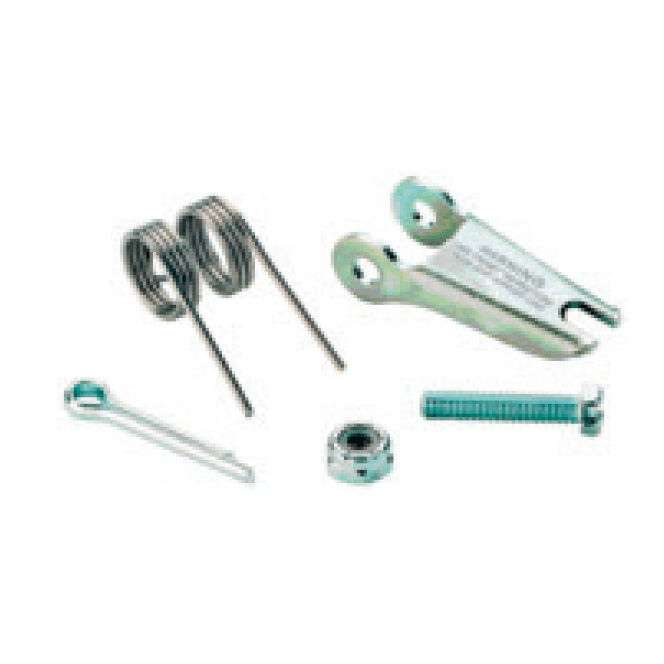
CROSBY® S-4320 HOOK LATCH KIT
Important Safety Information —
Read & Follow
- Always inspect hook and latch before using.
- Never use a latch that tis distorted or bent.
- Always make sure spring will force the latch against the tip of the hook.
- Always make sure hook supports the load. The latch must never support the load. (See Figure 1 & 2.)
- When placing two (2) sling legs in hook, make sure the angle between the legs is less than 90° and if the hook or load is tilted, nothing bears against the bottom of this latch. (See Figure 3 & 4.)
- Latches are intended to retain loose sling or devices under slack conditions.
- Latches are not intended to be an anti-fouling device.
- When using latch for personnel lifting, select proper cotter pin (See Figure 5 on the following page). See Step 7 for proper installation instructions.
- Never reuse a bent cotter pin.
- Never use a cotter pin with a smaller diameter or different length than recommended in Figure 5.
- Never use a nail, a welding rod, wire, etc., in place of recommended cotter pin.
- Always ensure cotter pin is bent so as not to interfere with sling operation.
- Periodically inspect cotter pin for corrosion and general adequacy
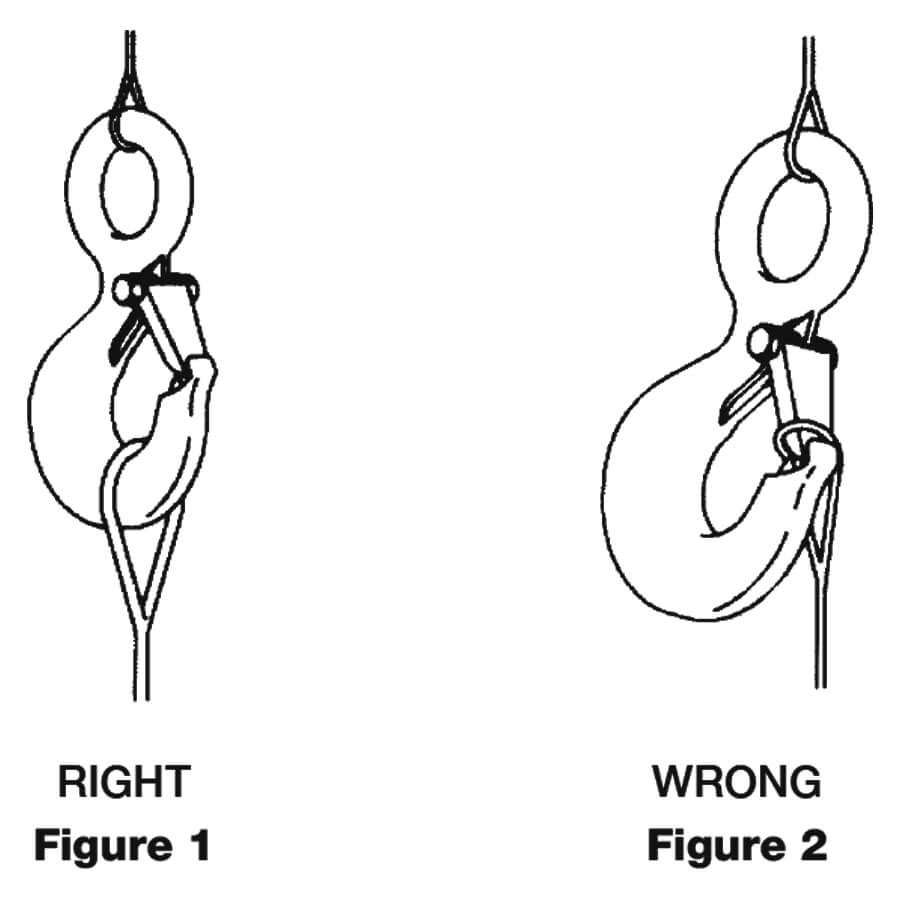
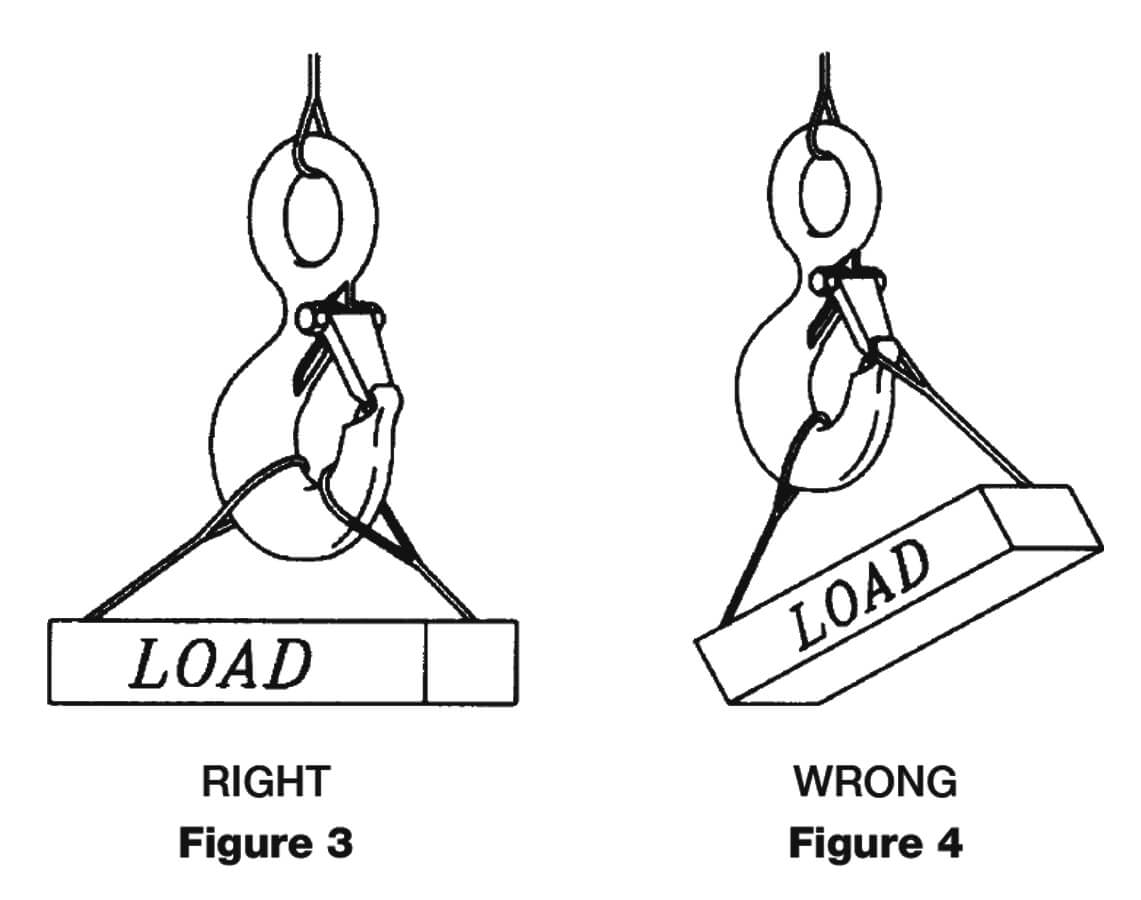
| Hook Working Load Limit† (tons) | Hook Identification Code | Recommended Cotter Pin Dimensions (in.) | |||
| Carbon | Alloy | Carbon | Alloy | Diameter | Length |
| 3/4 | 1 | DC | DA | 1/8 | 3/4 |
| 1 | 1 1/2 | FC | FA | 1/8 | 3/4 |
| 1 1/2 | 2 | GC | GA | 1/8 | 1 |
| 2 | 3 | HC | HA | 3/16 | 1 1/4 |
| 3 | 5 | IC | IA | 1/4 | 1 1/2 |
| 5 | 7 | JC | JA | 5/16 | 2 |
| 7 1/2 | 11 | KC | KA | 5/16 | 2 |
| 10 | 15 | LC | LA | 3/8 | 3 |
| 15 | 22 | NC | NA | 3/8 | 3 |
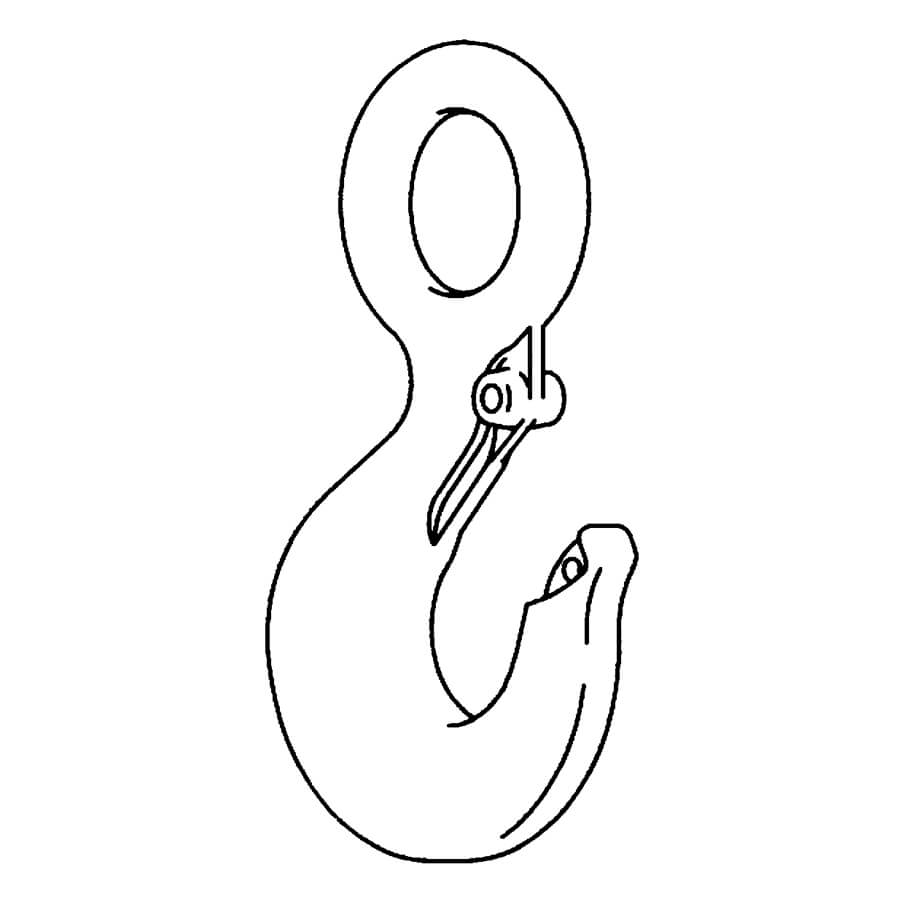
Step 1
Place hook at approximately a 45 degree angle with the cam up.
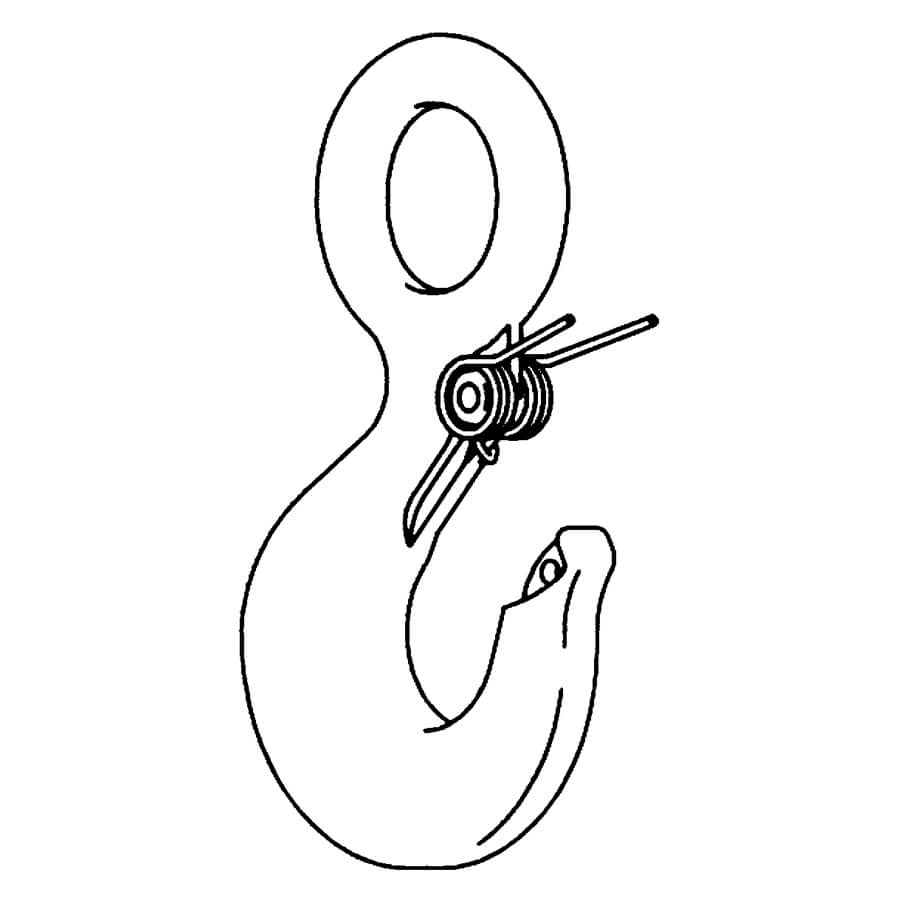
Step 2
Position coils of spring over cam with legs of spring pointing toward point of hook and loop of spring positioned down and lying against the hook.
Position coils of spring over cam with legs of spring pointing toward point of hook and loop of spring positioned down and lying against the hook.
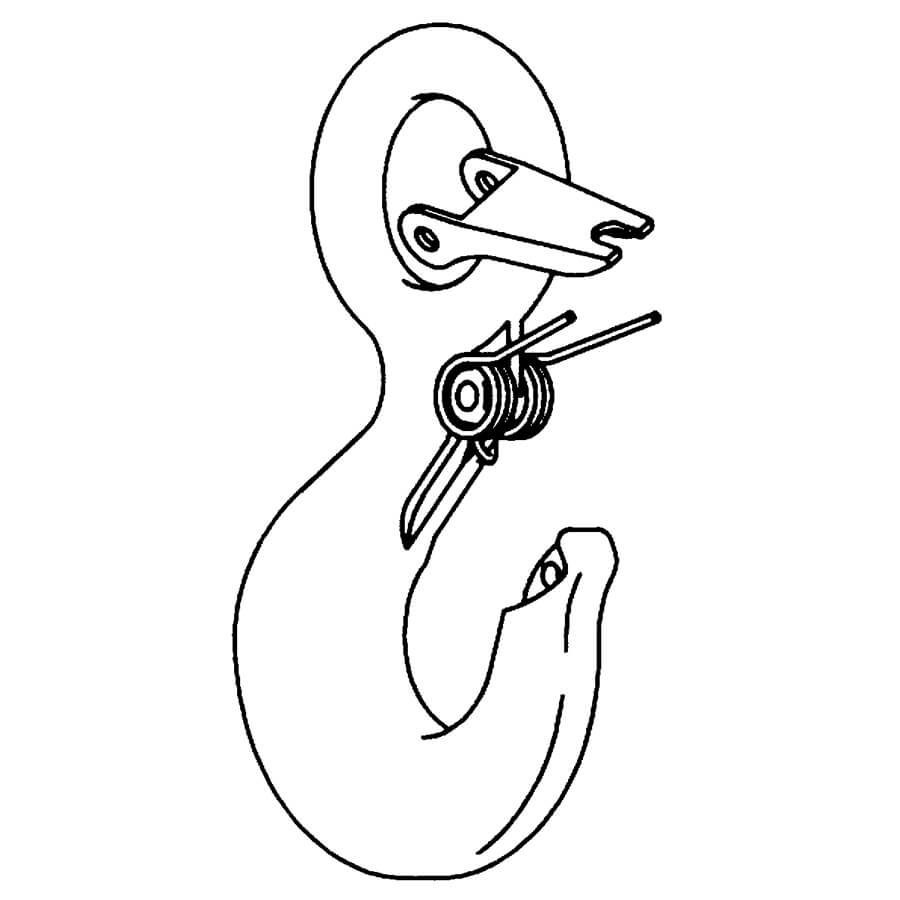
Step 3
Position latch to side of hook points. Slide latch onto spring legs between lockplate and latch body until latch is partially over hook cam.
Then depress latch and spring until latch clears point of hook.
Position latch to side of hook points. Slide latch onto spring legs between lockplate and latch body until latch is partially over hook cam.
Then depress latch and spring until latch clears point of hook.
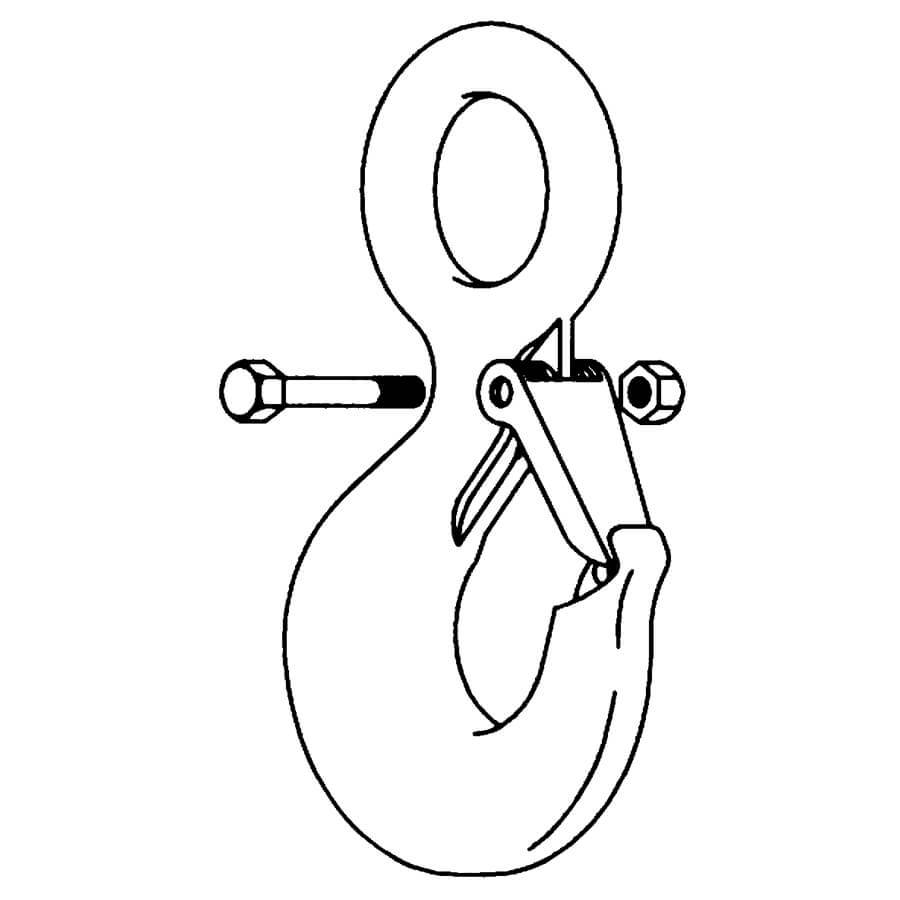
Steps 4, 5, & 6
4. Line up holes in latch with hook cam.
5. Insert bolt through latch, spring, and cam.
6. Tighten selflocking nut on one end of bolt.
4. Line up holes in latch with hook cam.
5. Insert bolt through latch, spring, and cam.
6. Tighten selflocking nut on one end of bolt.
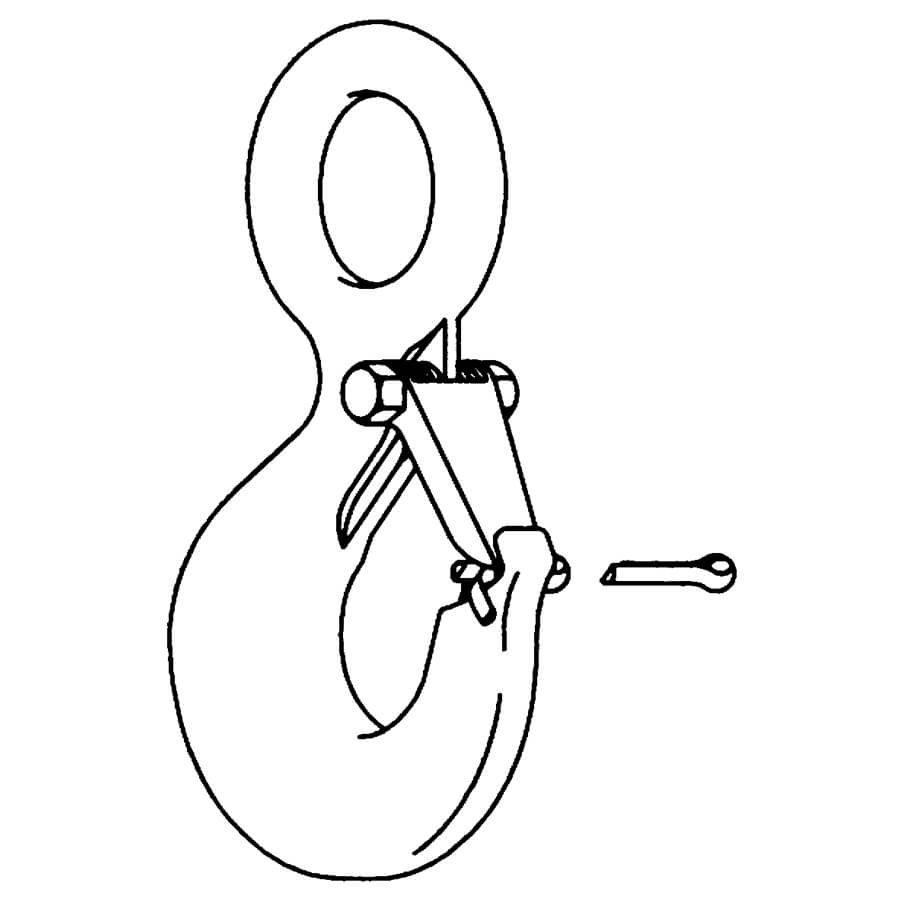
Step 7
For Personnel Lifting
With latch in closed position and rigging resting in bowl of hook, insert cotter pin through hook tip and secure by bending prongs.
For Personnel Lifting
With latch in closed position and rigging resting in bowl of hook, insert cotter pin through hook tip and secure by bending prongs.
WARNING:
- Loads may disengage from hook if proper procedures are not followed.
- A falling load may cause serious injury or death.
- Hook must always support the load. The load must never be supported by the latch.
- See OSHA Rule 1926.550 (g) for personnel hoisting by crane or Derricks. A Crosby S-319N, S-320N, S-322N Hook with an S-4320 latch attached (When secured with cotter pin) may be used for lifting personnel.
- An S-4320 Latch is only to be used with a Crosby S-319N, S-320N and
S-322N Hook. - DO NOT use this latch in applications requiring non sparking.
- Read and understand these instructions before using hook and latch.

